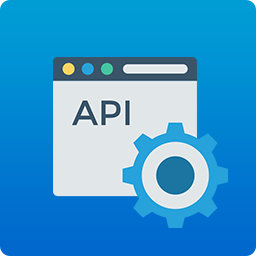前言介紹
- 這款 WordPress 外掛「Name Redactor」是 2013-04-04 上架。
- 目前尚無安裝啟用數,是個很新的外掛。如有要安裝使用,建議多測試確保功能沒問題!
- 上一次更新是 2013-04-08,距離現在已有 4408 天。超過一年沒更新,安裝要確認版本是否可用。以及後續維護問題!
- 外掛最低要求 WordPress 3.3 以上版本才可以安裝。
- 尚未有人給過這款外掛評分。
- 還沒有人在論壇上發問,可能目前使用數不多,還沒有什麼大問題。
外掛協作開發者
joav |
外掛標籤
hide | names | redact | privacy | redaction |
內容簡介
>
注意:此外掛需要 WordPress 版本 3.3 或以上方能運作。
名稱遮蔽器是一款 WordPress 外掛,允許 WordPress 使用者將個人資訊隱藏於搜尋引擎之外。如外掛名稱所示,這裡將要隱藏的內容為個人姓名,在訪客為人類或搜尋引擎機器人時,外掛將會檢查其身份。若為搜尋引擎機器人,外掛在呈現內容前會遮蔽任何個人姓名,並以 [遮蔽] 取代。至於對人類,姓名文本會顯現為正常文字。
名稱遮蔽器目的
網路上充滿個人姓名,經常與一些特定內容相關聯(例如言論、圖像等)。如果這些個人姓名被搜尋引擎索引,加上相關內容,搜尋到名字的使用者可以查閱到這些資訊。其中有些結果可能對於發佈者有益,但也有可能帶來損害。名稱遮蔽器的目的不在於阻止搜尋引擎達成對 WordPress 網站的索引或擋掉網站,而是在於避免搜尋引擎將個人姓名和其隨附的內容做索引,讓他人更容易查到。
功能:
透過文字編輯器的「遮蔽」按鈕,在頁面、文章或留言上手動標註需遮蔽的名字。
使用簡單的規則自動在頁面、文章或留言中自動遮蔽名字。
建立信任名單,永遠遮蔽名字,不受自動偵測的影響。
建立排除名單,避免自動遮蔽特定名字。
詳細說明
名稱遮蔽器外掛透過檢測訪客是否為搜尋引擎機器人來進行遮蔽,若是機器人,則會將文字內的需遮蔽個人名字用
手動標註名字
當初次安裝本外掛時,預設為僅手動標註需要遮蔽的名字。若您要在新的文章、頁面或留言中標註名字,或是修改已有的內容,只需要選擇文字編輯器,就會發現新增了一個「遮蔽」按鈕,透過這個按鈕,您就可以標註文字內的名字。只需選取名字後按下遮蔽按鈕即可。或者,在名字前面放置游標,按下「遮蔽」按鈕加入遮蔽標籤,在名字後方放置游標,然後再次按下「遮蔽」按鈕即可關閉標籤。請注意,這些標籤只能在網頁程式碼中被看見。在發布之前,您可以透過「預覽」按鈕以搜尋引擎機器人角度觀看。
另請注意,在卸載本外掛時,所有手動標註的名字都會保留,如果您要取消標籤,您必須手動移除,只能藉由返回再次編輯文章、頁面或留言進行操作。
自動名字檢測
您也可以設置外掛自動檢測個人名字的功能,不需要手動標註。
原文外掛簡介
Note: This plugin requires at least version 3.3 of WordPress.
The Name Redactor is a WordPress plugin which allows WordPress users to
hide personal data from search engines. As the name of the plugin implies,
the type of content we are talking about in this context are personal
names. The plugin works by checking whether the visitor to the site is
human or a search engine robot. If the visitor is a search engine robot,
the plugin will redact any personal names before delivering the content,
replacing them with the text [redacted]. To human visitors, the names
will appear as normal.
Purpose of the Name Redactor
The web is full of personal names, which is usually attached to some
contextual data (e.g. utterances, images, etc.). If these personal names
are indexed by search engines, along with the contextual
data attached to them, both will be discoverable by anyone searching for a
specific name. While some such discoveries may be beneficial to the
subject, others may be harmful. The purpose of the Name Redactor is not to
block search engines from accessing your WordPress site or indexing your
content. The purpose is to avoid having personal names being indexed along
with contextual data attached to those names.
Features:
Manually tag names to be redacted in pages, posts and comments by using
the ‘Redact’ button in the Text Editor.
Automatically redact names in pages, posts and comments, using a simple
set of rules.
Create an opt in list of names that should always be redacted,
regardless of any automatic name detection.
Create an opt out list of names that should not be redacted
automatically.
Detailed description
The Name Redactor plugin works by detecting if a visitor to the site is a
search engine robot, and if so, the plugin will redact any personal names
(which have been tagged with
delivering the content, replacing them with the text [redacted].
The tagging can either be done manually by the publisher, or automatically
by the program.
Manually tag names
When you install the plugin for the first time, it is set by default to
only redact names that have been manually tagged. If you go to add a new
post, page, or comment (or edit already existing content) and select the
Text Editor, you will see that a new button has been added to the
pre-existing ones. This button, labeled redact, allows you to tag a
name in the text. Simply select the name you want to tag, and press the
redact button. Alternatively, place the cursor before a name, press the
redact button to add the name redact tag, place the cursor after the name,
and press the redact button again to close the tag. Note that these tags
will only be visible in the page source of the website. Before publishing
something, you can view the text from a bot’s point of view by pressing
the ‘Preview’ button (note that you first need to select this option from
the plugin settings menu).
Also note that when uninstalling the plugin, any manually tagged names
will remain tagged. If you want to remove the tags, you will have to
remove them manually as well, by going back and editing the content.
Automatic name detection
You can also set the plugin to automatically try to detect personal names,
and redact them accordingly. This automatic name detection is accomplished
by using a simple set of rules, written as regular expressions:
1. It will match a single word with the first letter capitalized, as long
as that word is not at the beginning of the sentence.
2. It will match two or more consecutive words starting with the first
letter capitalized, as long as the first word is not at the beginning
of the sentence.
Names that have been tagged manually will continue to be tagged until the
tags are manually removed (so if you at a later date should wish to remove
tags from a name, you will have to go back and edit the post, comment or
page in question). Automatic tagging is done on the spot whenever the
content is requested by a search engine bot. This means that the content
in the database is left unchanged, and no tags are saved along with the
text.
Detecting whether or not a visitor to the site is a web crawler, is done
by checking the “User-Agent” header of the client software originating the
request (see the
Wikipedia page for
more information on this). Whenever a visitor requests to view the content,
be it a page, comment, or post, the plugin will check the user-agent
string up against a list containing a set of known search engine bot
names. If the User-Agent matches a name in the list, the plugin will
redact any tagged content before returning it to the bot. Upon
installation, the plugin will add a default set of bot names to the list.
The user can then freely add or delete names to or from the list.
Note that while the plugin is primarily meant as a way of preventing
search engines from indexing personal names, it can, in theory, also be
used to prevent disclosure of other types of personal data, by manually
tagging it in the same manner as you would do names.
Plugin settings
You can change the settings for the plugin in the ‘Name Redactor Settings’
sub menu, located in the ‘Tools’ menu in the admin panel. The Name
Redactor settings menu is organized into three different options pages,
with tabs to make navigation easier. The option pages are organized as
follows: Options, Opt-in/opt-out, and Bots.
The Options page allows you to change all the different settings of the
plugin, like which redact-mode to use. Each setting is accompanied by an
explanation of what it does.
The Opt-in/opt-out page allows you to create a list of names that should
always be redacted, regardless of any automatic name detection, or names
that should not be redacted automatically. Each name in the list is
accompanied by an opt-in or opt-out status. Names that are opt-in will be
tagged automatically, while names that are opt-out will not. You can add
or remove names to/from the list, as well as change the opt-in/opt-out
status of each name in the list at any time.
The Bots page displays a list of search engine bot names. Whenever
someone visits the site, the plugin will check the visitor (or rather,
its user agent) up against this list, and if the visitor matches a name
in the list (which means the visitor is a search engine bot), personal
names that have been tagged will be redacted before the content is
returned to the bot. For example, the search engine bot from Google is
named Googlebot. So by adding the name Googlebot to the list, you avoid
personal names (that have been tagged for redaction) being indexed by
Google. The plugin comes with a default set of bot names, and you can
add or remove names at any time.
Credit
The original idea for this plugin comes from Gisle Hannemyr
http://hannemyr.com/index.php.
Uninstallation
If you want the plugin to remove all tables and options associated with
the plugin upon deactivation, you can choose this in the Name Redactor
Settings sub menu, located in the ‘Tools’ menu in the admin panel.
Deactivate the plugin through the ‘Plugins’ menu in WordPress.
If you want to completely remove the plugin, click ‘Delete’ next to the
plugin name in the ‘Plugins’ menu in WordPress, or delete the folder named
‘name-redactor’ in the ‘/wp-content/plugins/’ directory. Clicking ‘Delete’
in the ‘Plugins’ menu ensures that all tables and options associated with
the plugin are removed as well.
Note that when uninstalling the plugin, any manually tagged names
will remain tagged. If you want to remove the tags, you will have to
remove them manually as well, by going back and editing the content.
各版本下載點
- 方法一:點下方版本號的連結下載 ZIP 檔案後,登入網站後台左側選單「外掛」的「安裝外掛」,然後選擇上方的「上傳外掛」,把下載回去的 ZIP 外掛打包檔案上傳上去安裝與啟用。
- 方法二:透過「安裝外掛」的畫面右方搜尋功能,搜尋外掛名稱「Name Redactor」來進行安裝。
(建議使用方法二,確保安裝的版本符合當前運作的 WordPress 環境。
延伸相關外掛(你可能也想知道)
 Cookie Notice & Compliance for GDPR / CCPA 》Cookie Notice 提供簡單易定制的網站橫幅,以協助你的網站遵守歐盟 GDPR cookie 法律以及 CCPA 法規下的某些cookie同意要求,並與 Cookie Compliance 無縫集...。
Cookie Notice & Compliance for GDPR / CCPA 》Cookie Notice 提供簡單易定制的網站橫幅,以協助你的網站遵守歐盟 GDPR cookie 法律以及 CCPA 法規下的某些cookie同意要求,並與 Cookie Compliance 無縫集...。 Complianz – GDPR/CCPA Cookie Consent 》Complianz 是一款支援 GDPR、ePrivacy、DSGVO、TTDSG、LGPD、POPIA、APA、RGPD、CCPA/CPRA和PIPEDA 的插件,提供基於Cookie掃描結果的條件Cookie通知和自定義...。
Complianz – GDPR/CCPA Cookie Consent 》Complianz 是一款支援 GDPR、ePrivacy、DSGVO、TTDSG、LGPD、POPIA、APA、RGPD、CCPA/CPRA和PIPEDA 的插件,提供基於Cookie掃描結果的條件Cookie通知和自定義...。 WP Consent API 》WP Consent API 是一個外掛,可以標準化插件之間同意的同意類別溝通。它需要使用 Cookie 標語插件和至少一個支援 WP Consent API 的其他插件。, , 有了這個插...。
WP Consent API 》WP Consent API 是一個外掛,可以標準化插件之間同意的同意類別溝通。它需要使用 Cookie 標語插件和至少一個支援 WP Consent API 的其他插件。, , 有了這個插...。Termly – GDPR/CCPA Cookie Consent Banner 》Termly 的 GDPR Cookie Consent Banner 是 WordPress 中最簡便、有效、且流行之 cookie 同意外掛之一。透過 Termly 所提供之自訂 cookie 同意橫幅及 cookie ...。
 Statify 》Statify 提供了一個簡單明瞭且節省空間的網站瀏覽次數查詢功能。它是隱私友好的,因為它既不使用 Cookies,也不使用第三方。, 一個互動圖表後面會顯示參照來...。
Statify 》Statify 提供了一個簡單明瞭且節省空間的網站瀏覽次數查詢功能。它是隱私友好的,因為它既不使用 Cookies,也不使用第三方。, 一個互動圖表後面會顯示參照來...。Usercentrics Cookiebot – Cookie Banner & Privacy Compliance for GDPR/CCPA/Google Consent Mode 》Cookiebot Consent Management Platform (CMP) 是一個易於使用且全自動的 WordPress Cookie 橫幅。它可符合 GDPR、LGPD、CCPA 及其他隱私法規,並通過讓網站...。
Koko Analytics 》Koko Analytics 是一款針對 WordPress 的隱私友好型分析外掛程式。它不使用任何外部服務,所以您的訪客資料永遠不會與任何第三方公司分享。, 此外,它不會收...。
Force Login 》這款 WordPress 外掛能夠輕鬆地透過設定需要登入來隱藏您的網站,讓訪客必須先進行登入才能查看網站。只需按下開關,就能完成。, 讓您的網站在還未公開之前保...。
 WP DSGVO Tools (GDPR) 》一站式解決方案, 作為 WP GDPR 的使用者,您只需要完成兩個簡單的任務:, , 選擇使用的服務, 填寫幾個輸入欄位, , WP GDPR 其他所有事項都會處理:, , 創建 c...。
WP DSGVO Tools (GDPR) 》一站式解決方案, 作為 WP GDPR 的使用者,您只需要完成兩個簡單的任務:, , 選擇使用的服務, 填寫幾個輸入欄位, , WP GDPR 其他所有事項都會處理:, , 創建 c...。 Restricted Site Access 》此外掛能限制訪客的存取權限,只有登入或從特定IP地址存取的訪客才能訪問您的網站;同時,還能將被限制的訪客引導至登入頁面、重新導向、顯示訊息或頁面等功...。
Restricted Site Access 》此外掛能限制訪客的存取權限,只有登入或從特定IP地址存取的訪客才能訪問您的網站;同時,還能將被限制的訪客引導至登入頁面、重新導向、顯示訊息或頁面等功...。 Statify – Extended Evaluation 》這個外掛程式評估了使用隱私友好的Statify外掛所收集的數據。Statify僅儲存每個頁面瀏覽的日期、引薦人和目標網址。, 這個外掛程式根據以下標準進行評估:, ,...。
Statify – Extended Evaluation 》這個外掛程式評估了使用隱私友好的Statify外掛所收集的數據。Statify僅儲存每個頁面瀏覽的日期、引薦人和目標網址。, 這個外掛程式根據以下標準進行評估:, ,...。WP Hide Post 》這個外掛強在幫助你完全控制文章的顯示方式。在 WordPress 網誌上,一般加入的文章會顯示在首頁中,通常是第一篇位置,也會同樣顯示在分類、標籤、存檔頁面等...。
 PublishPress Permissions: Control User Access for Posts, Pages, Categories, Tags 》或標籤,你會看到一個名為「權限:編輯此內容」的方塊,它允許你為每個用戶角色、個別用戶或用戶群組設置「啟用」或「拒絕」的權限。你還可以設置所有訪客和...。
PublishPress Permissions: Control User Access for Posts, Pages, Categories, Tags 》或標籤,你會看到一個名為「權限:編輯此內容」的方塊,它允許你為每個用戶角色、個別用戶或用戶群組設置「啟用」或「拒絕」的權限。你還可以設置所有訪客和...。 Plausible Analytics 》Plausible Analytics 是一個簡單、開源、輕量且注重隱私的網站分析工具,是 Google Analytics 的替代品。, , Plausible Analytics 不使用 cookies,完全符合 ...。
Plausible Analytics 》Plausible Analytics 是一個簡單、開源、輕量且注重隱私的網站分析工具,是 Google Analytics 的替代品。, , Plausible Analytics 不使用 cookies,完全符合 ...。Lazy Load for Videos 》這個外掛改善了頁面加載時間,提高了你的 Google PageSpeed 指數。它與 oEmbed 配合使用,可以將嵌入的 YouTube 和 Vimeo 視頻替換為可點擊的預覽圖片。, 通...。
